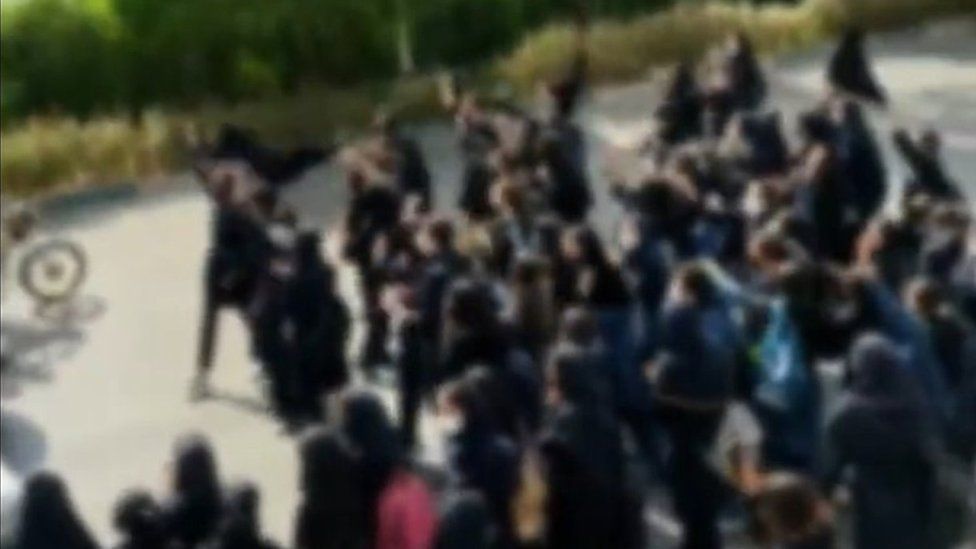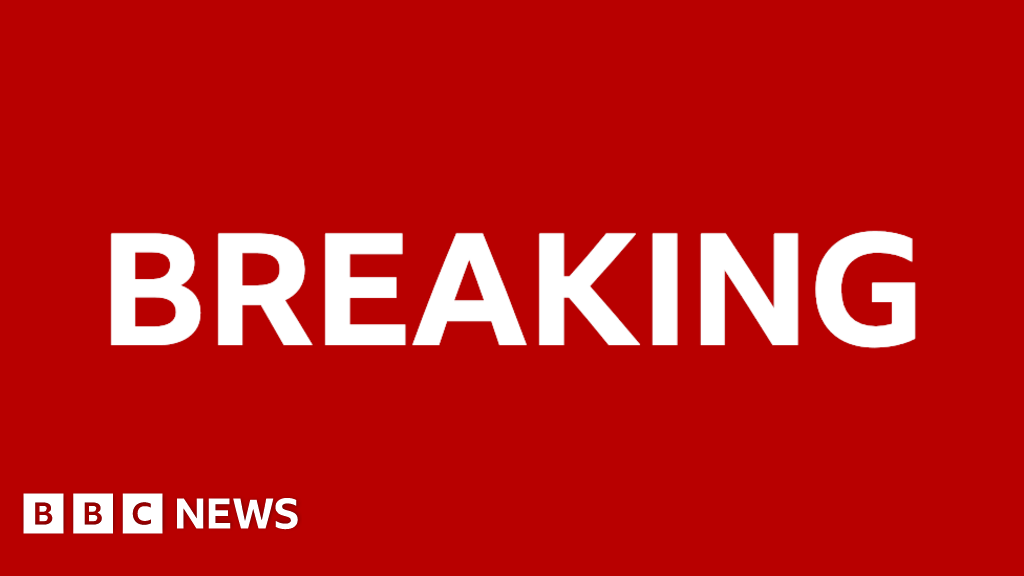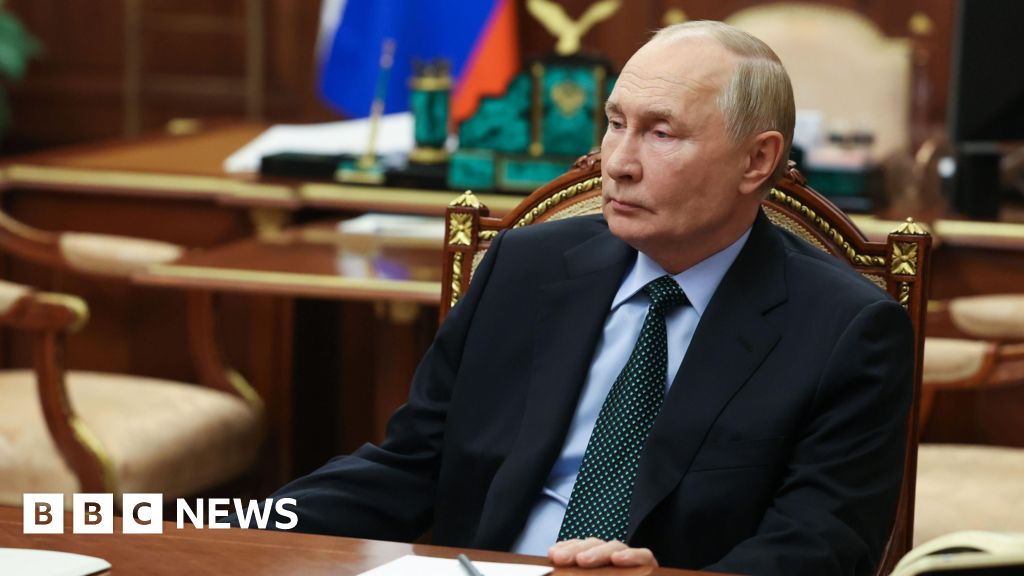ARTICLE AD BOX
 Image source, Twitter
Image source, Twitter
In Shiraz, dozens of schoolgirls were filmed blocking a main road while waving their headscarves in the air
In an unprecedented move, schoolgirls have joined the protests that have swept Iran since the death of a woman detained for breaking the hijab law.
Videos verified by the BBC show teenage students waving their headscarves in the air at demonstrations inside schoolyards and on the streets.
They are also heard shouting slogans against the clerical establishment, including "mullahs must get lost".
The chants echoed those heard at the wider protests over the past two weeks.
In one video posted on social media on Monday, girls in Karaj, a city just to the west of the capital Tehran, force a man believed to be the local education director out of their school and shouting "shame on you".
In another clip from Karaj, students are heard shouting: "If we don't unite, they will kill us one by one."
In the southern city of Shiraz on Monday, dozens of schoolgirls blocked traffic on a main road while waving their headscarves in the air and shouting "death to the dictator" - a reference to the Supreme Leader, Ayatollah Ali Khamenei, who has the final say on all state matters.
Further protests were reported on Tuesday in Tehran and the north-western cities of Saqez and Sanandaj.
A number of students were also photographed standing in their classrooms with their heads uncovered. Some were raising their middle fingers - an obscene gesture - at portraits of Ayatollah Khamenei and the founder of the Islamic Republic, Ayatollah Ruhollah Khomeini.
The first reaction from Iran's supreme leader about protests over the death of #MahsaAmini was loaded with warnings of escalation, yet the protests themselves spread to secondary schools today with some schoolgirls making a point about how they felt towards the supreme leader. pic.twitter.com/ya2MPr15b4
— Siavash Ardalan (@BBCArdalan) October 4, 2022The BBC is not responsible for the content of external sites.View original tweet on Twitter
The protests by the schoolgirls began hours after Ayatollah Khamenei, who has final say on all state matters, broke his silence on the unrest and accused the United States and Israel, Iran's arch-enemies, of orchestrating "riots".
He also gave his full backing to the security forces, which have responded to the protests with a violent crackdown.
The unrest was triggered by the death of Mahsa Amini, a 22-year-old Kurdish woman who fell into a coma after being detained by morality police on 13 September in Tehran for allegedly violating the law requiring women to cover their hair with a hijab, or headscarf. She died in hospital three days later.
Her family has alleged that officers beat her head with a baton and banged her head against one of their vehicles. The police have denied that she was mistreated and said she suffered "sudden heart failure".
The first protests took place in Kurdish-populated north-western Iran, where Ms Amini lived, and then spread rapidly across the country.

 2 years ago
18
2 years ago
18








 English (US)
English (US)